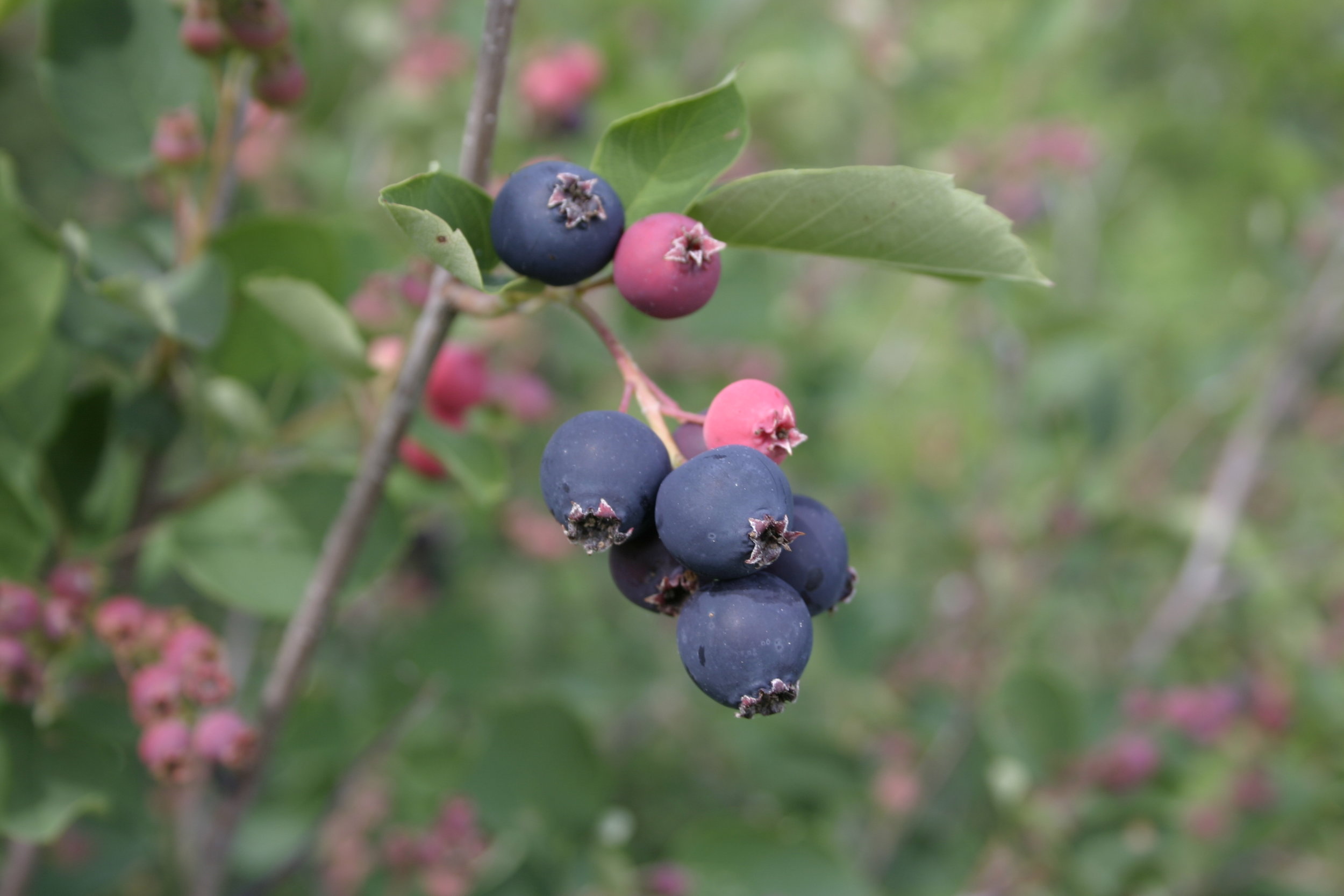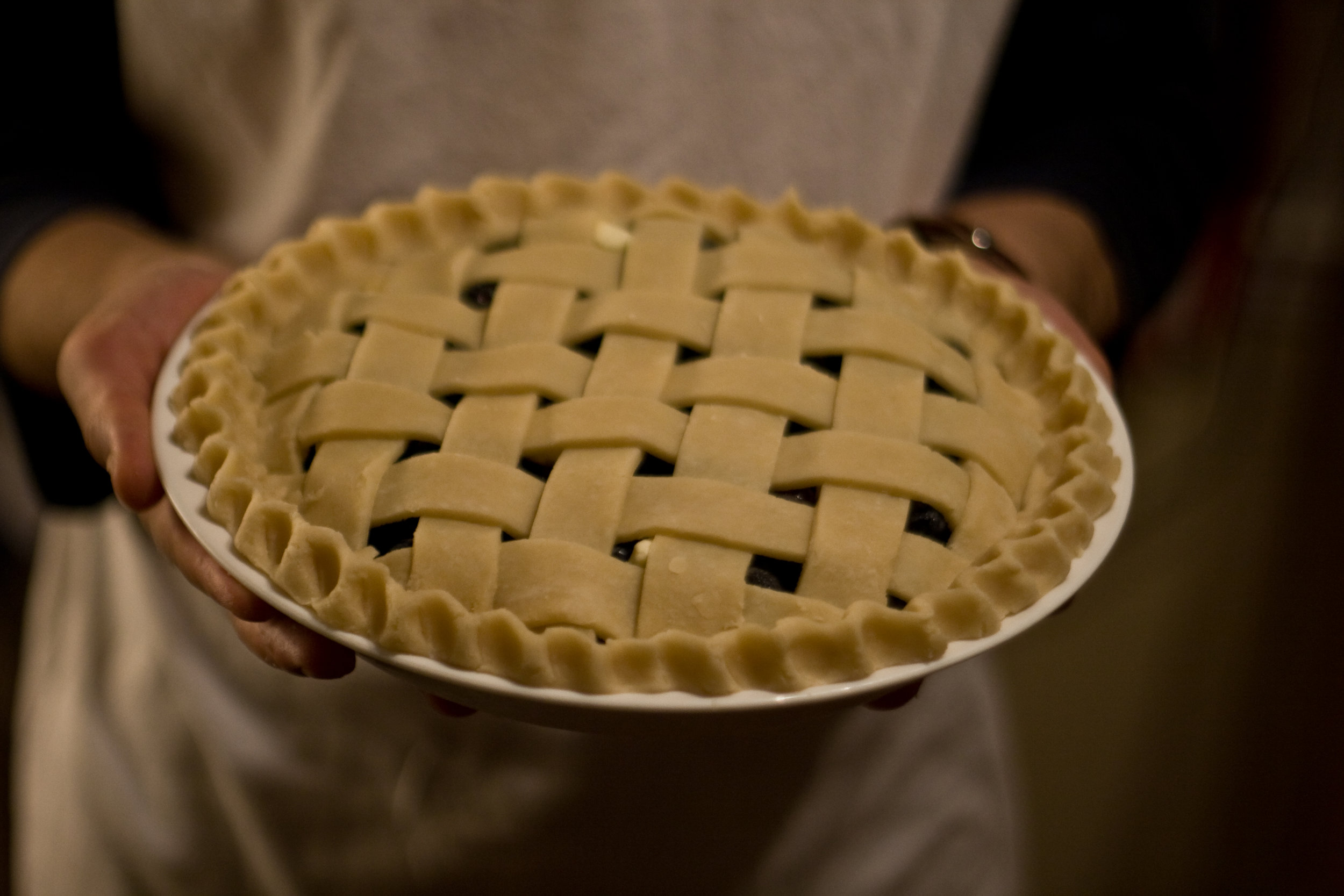Saskatoon (Amelanchier alnifolia)
Saskatoon bushes are a shrub with tasty edible berries that is common in the Edmonton region. In the past, Indigenous people used the berry to make pemmican, which is preserved dried meat, and in today’s world, the berry is used to make many delicious foods including pies and jams.
Photo by Patrick Kyle
Photo by Andrew Malone
Why They Matter to Us
Saskatoon shrubs have a long history of human usage both in the past and present. The berries are edible and provide important nutrients including Vitamin C and iron.
The presence of Saskatoon shrubs indicates that the area receives a significant amount of moisture as the plant will not grow in areas with less than 350 mm of annual precipitation.
As Saskatoon bushes typically grow in thickets, this shrub provides good wildlife habitat, preventing exposure of mammals and nesting birds to predators or bad weather.
Saskatoon berries are an important food in fall and winter for any wildlife, including especially birds.
How You Can Help
Avoid using pesticides as they can harm the bees that pollinate Saskatoon flowers. Saskatoon shrubs can self-fertilize but if bees pollinate the flowers, more berries are produced.
Plant Saskatoon shrubs in your garden instead of other non-native shrubs.
Support protected areas in the Edmonton area such as those conserved by EALT!
Photo by Patsy Cotterill
How to Identify
Saskatoon bushes are a shrub, meaning they have woody growth, with young stems being red-brown and older stems being gray. Their alternately-arranged oval leaves are distinctive with toothed ends and smooth sides.
Flowers bloom in clusters of snowy white with each head containing 5 petals. They produce small purple/blue clusters of berries that taste similar to blueberries.
Where to find
Saskatoon shrubs can be found almost anywhere across Canada, from British Columbia to Ontario. and north in the Yukon and Northwest Territories. It prefers areas with high levels of organic matter and well-drained soils
Photo by Doris May
Food Chain
The Saskatoon is a primary producer utilizing photosynthesis to create food. It requires sunlight and nutrient and water-rich soil.
All above-ground parts of the Saskatoon are food for wildlife. Branch tips and leaves serve as winter and summer foods for moose, elk and deer. The flower buds are fed on by sharp-tailed grouse in the spring and winter. Birds, bears, chipmunks, squirrels and other animals all feed on the berries and help spread the seeds through their scat.
Fun Facts
This shrub’s name comes from its Cree name “mis-ask-quah-toomina” which was shortened to “Saskatoon” by early settlers.
This shrub goes by many common names including serviceberry, Indian pear and juneberry.
After a fire, the Saskatoon shrub may lose its branches, leaves and flowers but the roots will typically survive if the soil is moist. It has been observed there is even more Saskatoon growth after a fire.
Indigenous usage of the Saskatoon included food, arrow shafts and medicine for liver trouble and intestinal issues.
Sources
Nature’s Nourishment. 20 Recipes Featuring wild native plants found in the Edmonton Region, from the Edmonton and Area Land Trust
Saskatoon webpage from Alberta Plant Watch





